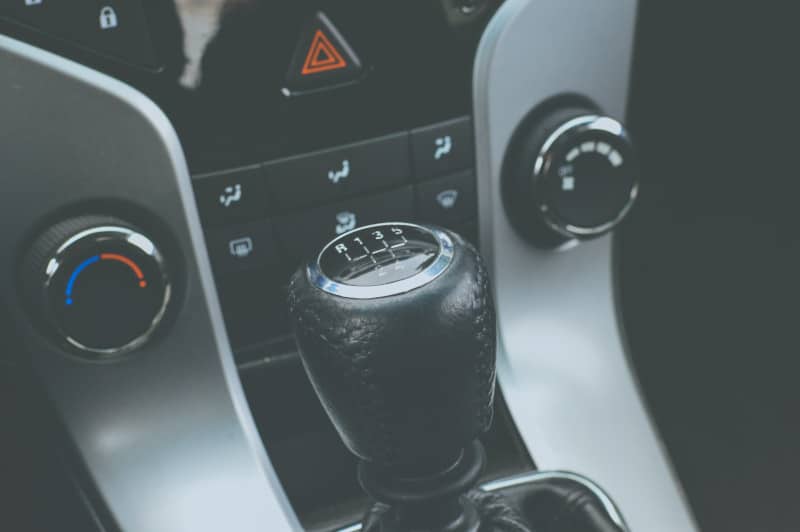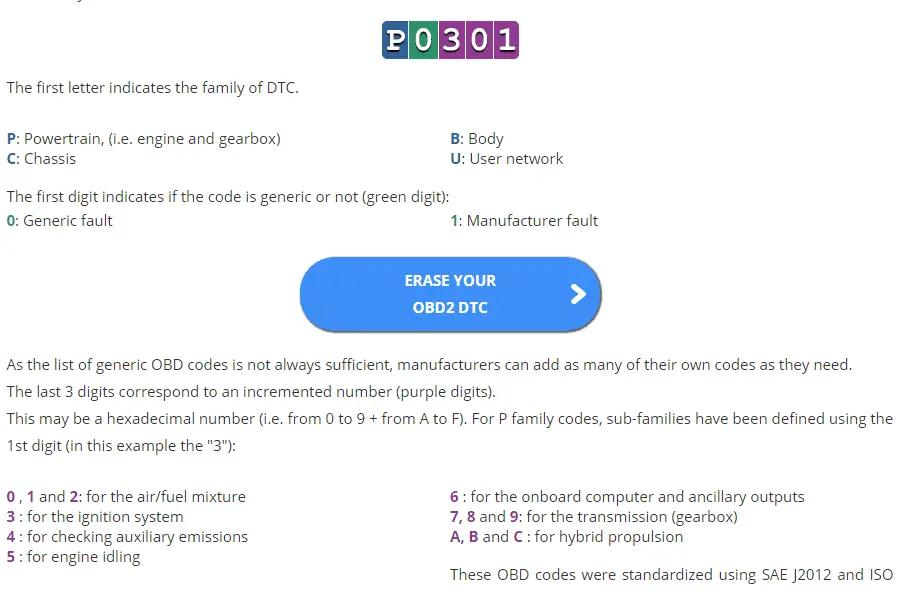How to troubleshoot common transmission issues

Hey, Vince here.
Allow me to tell you the ugly truth: transmission problems are one of the most difficult to diagnose.
Even with the help of an OBD2 scanner that can read transmission fault codes, the root of the problem usually can’t be fixed by a simple bolt-on part. Transmission issues can manifest without a check engine code, and that’s the toughest part. We’ll talk more about that later. But if you do have a CEL light and suspect a transmission issue, we’ll help you pick a diagnostic tool that will pull the transmission fault codes.
The check engine light can mean many things. In most cases, the MIL or malfunction indicator light will turn ON if CPU detects a problem with the engine in general. But there are times when the check engine light can be triggered by a transmission problem. The same goes for the ABS (anti-lock brakes and the SRS (supplemental restraint system i.e. airbags).
Depending on the make and model, the automatic transmission is usually equipped with its own control module or CPU. It is connected to the engine CPU to monitor all the integrated systems. If something goes wrong with the transmission, it cause the check engine light to turn on, but not all the time. In most cases, the driver will detect noises or drivability problems with the transmission without the presence of a check engine light (like your shift lock not releasing).
The good news is transmission fault codes can now be diagnosed using a cheap scan tool. But there’s a catch. Not all OBD2 scanners can read transmission fault codes. The reality is basic OBD2 scan tools can only scan and read engine fault codes. If the check engine light is triggered by a problem with the transmission, you’ll need to plug in a different scan tool to read the trouble code.
Four Popular OBD2 Scanners that Reads Transmission Codes
1. BlueDriver Bluetooth Professional
If you’re one of those who prefers a wireless OBD2 scanner, take a look at the BlueDriver Bluetooth Professional. The scanner is priced higher than the BAFX but offers a ton of features for the average car owner. Not all wireless scanners can read transmission fault codes. But for a device developed by professional engineers in North America, the BlueDriver is different from those run-of-the-mill OBD2 scanners.
This device will not only read and clear engine trouble codes. It can read and clear enhanced trouble codes from the SRS, ABS, and automatic transmission of import and domestic vehicles. It can also retrieve code definitions and reported fixes for a fuss-free repair.
If you want a wireless OBD2 scanner to read transmission fault codes in your GM, Ford, Chrysler, Toyota, Nissan, Honda, or Volkswagen vehicle, you can’t go wrong with the Bluedriver Bluetooth Professional. Click on this link to certify vehicle coverages for the BlueDriver scan tool.
Read our Blue Driver Pro review here
2. BAFX
The BAFX is a WiFi code reader that you’ll need to pair with your Android smartphone. On your smartphone, make sure to download the right app. In order to read transmission codes with your new tool, grab Torque Pro and purchase the Enhanced PIDs pack for your vehicle. This cost about $20.
3. Autel ML629 Maxi Link
The Autel ML629 Maxi Link is a fine obd2 scanner with abs and srs capability. It cost upwards of a hundred bucks at the time of writing this but you ultimately get what you pay for.
Unlike wireless OBD2 scan tools, the Autel ML629 Maxi Link does not require to be paired with your Android or Apple smartphone. This is a modern scan tool with an old school design. It hooks up easily to the OBD2 port using the supplied cable. It can read and clear check engine light codes along with trouble codes in the ABS, SRS, and automatic transmission. Is the SRS or ABS warning light bothering you? The Autel ML629 is the right scan tool for the job.
This code reader is also equipped with an Auto VIN function. This allows the scanner to quickly retrieve the meaning of the fault codes in the built-in DTC lookup library. The device will not only display the fault code, but it will explain the meaning of the code in detail to facilitate a speedy repair.
With the Autel ML629 Maxi Link, it is easy to do it all. If you were pondering about getting the Autel ML619/AL619, set your sights on the ML629 Maxi Link instead. This updated version offers a wider range of compatibility to all European, Asian, and American vehicles.
Want to be sure before you buy? Click on this link to check the vehicle coverage for the Autel Maxi Link ML629.
4. Autel MD802 MaxiDiag Scan Tool
Again, this Autel MD802 scan tool is not what you would call cheap. But if you are trying to diagnose transmission and engine fault codes in a modern car, you are better off with the multi-faceted functionality of the Autel MD802 MaxiDiag Scan Tool.
The scanner offers a complete array of OBD2 diagnostic functions. It can scan, read, and erase engine trouble codes. It can also read SRS, ABS, and transmission fault codes. It even comes with an oil reset and EPB (electronic parking brake) reset function. It is designed to work on most 1996 and newer vehicles sold in the USA, both import and domestic.
This OBD2 scanner is compatible with all OBD2 protocols including CAN-BUS. Clink on this link to find out specific vehicle coverage for the Autel MD802 MaxiDiag Scan Tool.
Diagnosing Common Transmission Problems
Here are the most common symptoms of a failing automatic transmission:
- Slipping. The symptoms of a slipping automatic transmission are no different from that of a slipping manual gearbox. Stepping on the throttle will increase the engine RPM, but the vehicle will not move in accordance to the rise in engine speeds. Slipping also occurs if you apply throttle pressure and the car will only creep forward, or not all. This type of transmission problem may or may not trigger a check engine light on the console.
- Overheating transmission. The fluid inside the tranny is pumped to the transmission oil cooler. This is utilized to reduce the buildup of excess heat. The transmission needs to operate at optimal temperatures to function properly. But if there’s too much heat, the transmission will fail or break down. In most cases, an overheating transmission will trigger the check engine light. If this happens while driving, park the vehicle and raise the hood to cool the engine bay. Check the oil level in the transmission. Lack of ATF or automatic transmission fluid can cause overheating. It is also a good idea to check the coolant level in the radiator. If the radiator is running too hot, it will also affect the cooling performance of the transmission oil cooler.
- Problems with transmission solenoids. If you notice the transmission is jerking or shifting erratically, this could signify a problem with the solenoids. The solenoids in an automatic transmission are responsible for regulating the flow of oil inside the system. In the absence of oil leaks, an iffy transmission could mean a solenoid malfunction. You’d notice this if your shift lock stopped working.
(read more about shift solenoid repair costs) - Unable to shift gears. The automatic transmission should shift smoothly as you step on the pedal. If you notice the system is not shifting gears as it should (along with a noticeable check engine light on the console), stop the vehicle and have it diagnosed immediately.
How to Get Transmission Codes with a Diagnostic Tool
The procedure is for scanning engine and transmission codes are the same. Plug in the OBD2 scanner to the OBD port, turn on the device, and let the scanner do the rest of the work. If you purchased a wireless OBD2 tool, make sure you have a good app like Car Gauge or Torque Pro and have paid for the enhanced codes for your vehicle.
Let’s break down a common transmission generic code:
P0720 (Output Speed Sensor issues)
The first letter of the fault code will indicate the family of the diagnostic trouble code:
- P = Powertrain (engine and gearbox)
- C = Chassis
- B = Body
- U = User network
The first digit in the error code will signify if the code is generic or manufacturer specific:
- 0 = Generic fault
- 1 = Manufacturer-specific code
The second number means specific codes for the following:
- 0, 1, and 2 = Air/fuel mixture
- 3 = Ignition system
- 4 = Auxiliary emissions
- 5 = Engine idling
- 6 = On-board computer ancillary outputs
- 7, 8, and 9 = Transmission or gearbox
- A, B, and C = Hybrid propulsion system
Most of your transmission codes with be P06xx or P07xx if the issue is with the tranny or a computer sensor. If you’re getting overheating your fluid issues, you’ll probably see a P02XX code.

Common Generic Trouble Codes (DTCs) for Transmissions
Many times when you have transmission issues, you won’t get a DTC code or any other useful sensor information. You’ll know you have an issue because your car won’t go forward or won’t properly shift. In most situations, I suggest people take their vehicle to a certified transmission repair shop and have them take a look. Some transmission problems are cheaply fixed, but if they go too long, can cause much costlier repairs.
If you are fortunate enough to get a DTC from your transmission, make sure you lookup the OBD code here. Here’s some of the most common OBD transmission codes:
- P0218 – High temperature. Often caused by a fluid leak and the symptoms include slipping and low fluid. Get this checked right away!
- P0705 – Range Sensor. Vehicle often won’t start or shift. Usually caused by a defective range switch
- P0714 – High Temperature. This is usually seen with dirty transmission fluid or a sensor that needs to be replaced
- P1824 – Transmission range selector. The shift cable either needs to be adjusted or the internal mode switch is malfunctioned. Get this to a professional!



